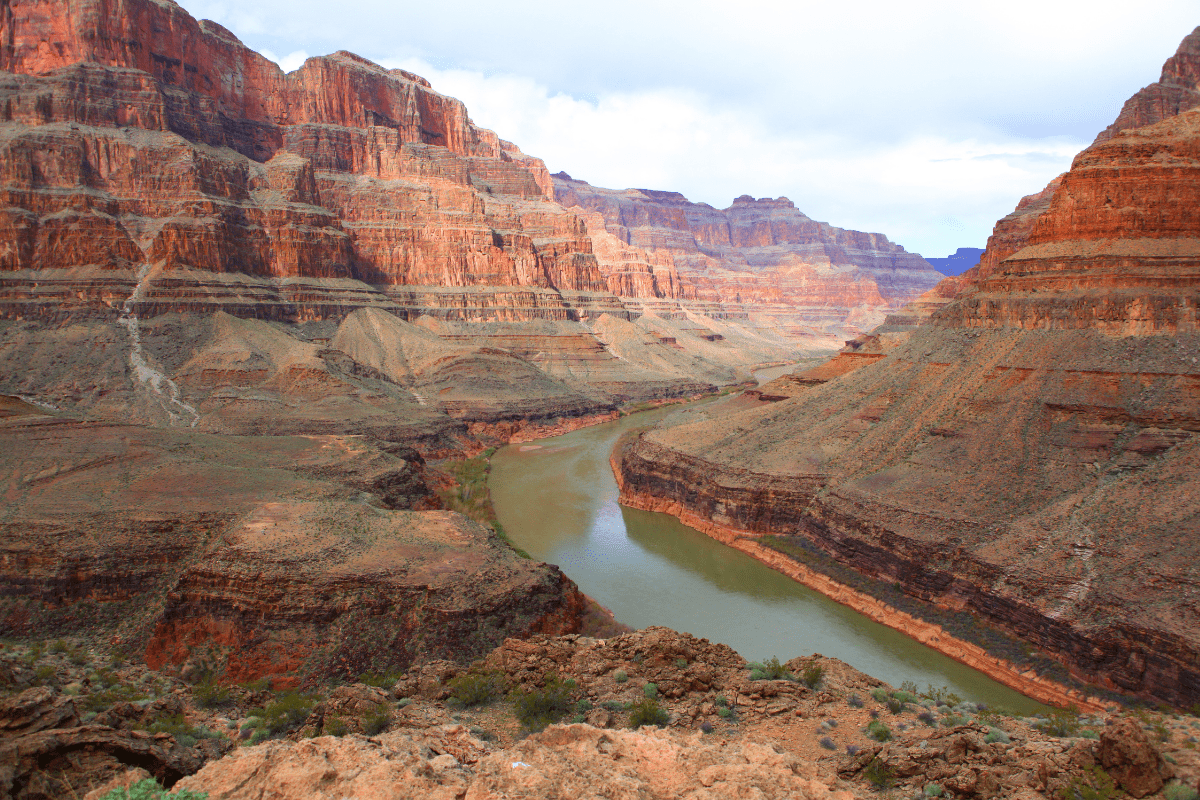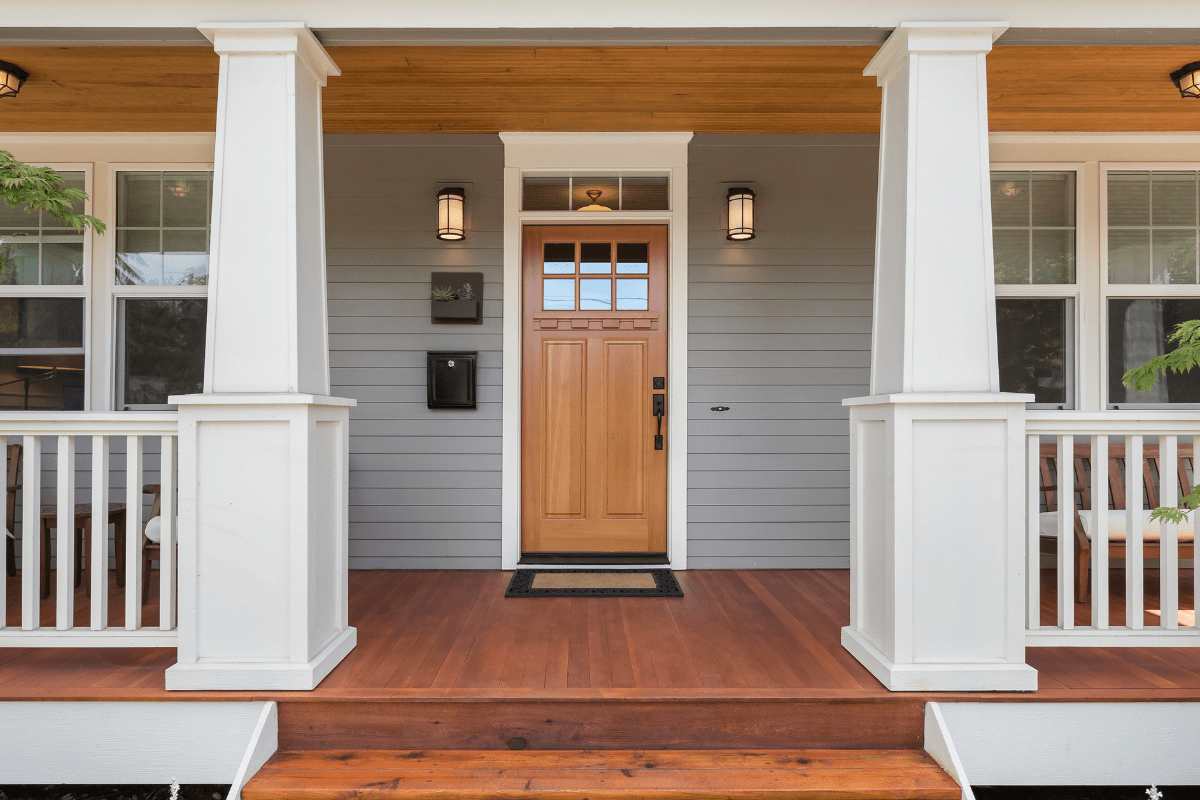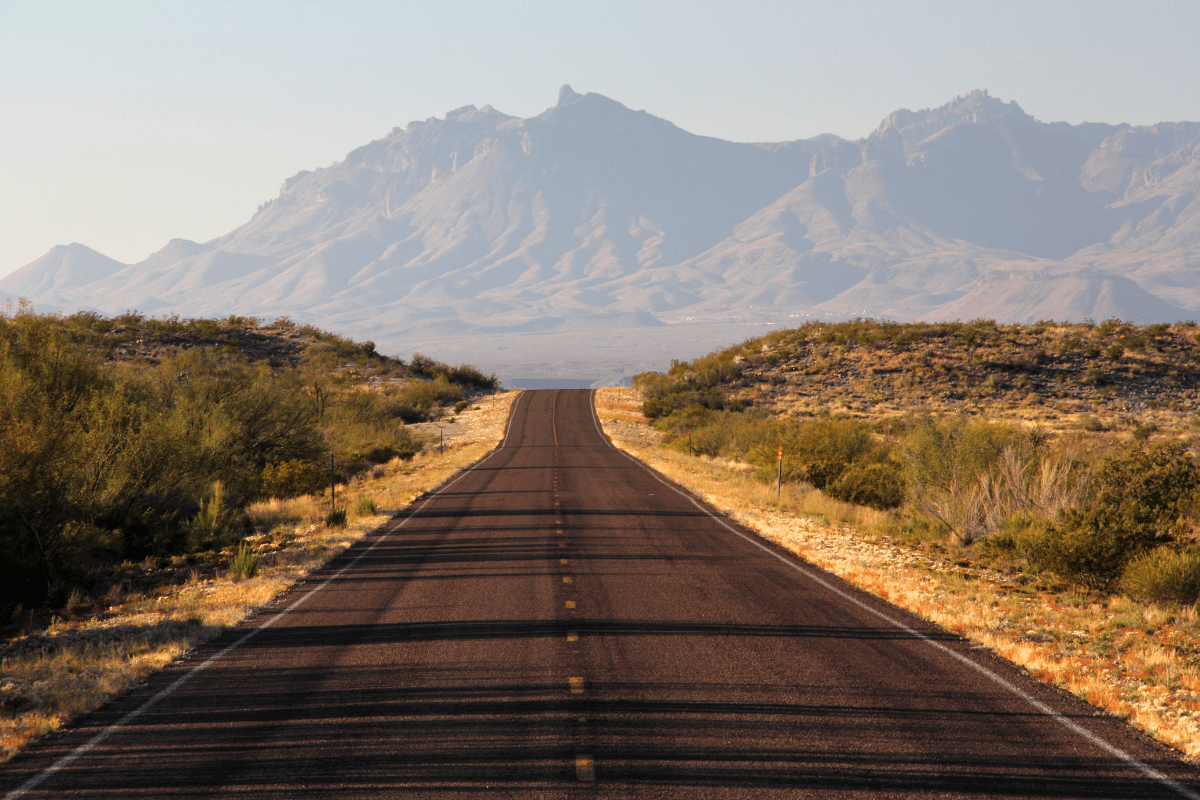You know that feeling when you're standing in a place where something incredible happened centuries ago, and you can almost hear the echoes? Arizona delivers that sensation in spades, from cliff dwellings where ancient families shared meals to saloons where disagreements got settled with six-shooters. With over 22.5 million people exploring these historic attractions annually, you're definitely not alone in your curiosity… but somehow these vast desert landscapes make every discovery feel personal.
The Grand Canyon's secret life beyond scenic overlooks
The Grand Canyon might be famous for making people say "wow" and drop their phones over the edge (please don't), but its human history runs deeper than that mile-deep gorge.
Archaeological treasures hiding in plain sight
Sure, 4.9 million visitors come for the Instagram-worthy views, but archaeologists keep finding evidence of human presence dating back 13,000 years. Karl Karlstrom, a University of New Mexico geologist, puts it perfectly: "You'd think everything is already discovered in the Grand Canyon… yet we're still dramatically changing our understanding." Recent discoveries include 4,000-year-old split-twig figurines that ancient peoples left in caves, probably for reasons we'll never fully understand but love to speculate about over campfire conversations.
The South Rim stays open 365 days a year, though the North Rim takes a winter break from mid-October to mid-May because apparently even tourist attractions need vacation time. At $35 per vehicle for a seven-day pass, it's cheaper than a fancy dinner date and infinitely more impressive. Pro tip: the America the Beautiful Annual Pass costs $80 and covers all federal sites, paying for itself after just three visits if you're the type who catches the national park bug.
While everyone's jostling for position at the main viewpoints, head to the South Rim Historic District to explore structures like the 1905 El Tovar Hotel. This isn't just any old building… it's where early 20th-century tourists experienced their first taste of "roughing it" with actual china dinnerware and imported European chefs. The nearby Hopi House, designed by Mary Colter, showcases Native American arts and crafts in a building that recreates traditional Hopi dwelling architecture.
Beyond the big hole: Northern Arizona's archaeological wonders
Canyon de Chelly National Monument manages to be both a National Park Service site and Navajo Nation land, which is like being both a cat person and a dog person… rare but wonderful. With over 2,700 archaeological sites tucked into its canyon system, this place has more history per square mile than your grandmother's attic.
What makes Canyon de Chelly special isn't just its age, it's that 40 Navajo families still live and farm within the park boundaries, just as their ancestors have for centuries. You'll need an authorized Navajo guide to access the canyon floor, which honestly makes the experience better. As Cecilia Shields, Chief of Interpretation for Flagstaff Area National Monuments, explains: "These oral histories are so important that they've become song, they've become prayer, they've become ceremony."
Wupatki National Monument preserves 800 pre-Columbian pueblos across 36,000 acres, including a feature that sounds made up but isn't: North America's northernmost ballcourt. The main pueblo housed 85 to 100 people around 1182 CE, serving as a multicultural trading center where Sinagua, Kayenta, and Cohonina peoples converged. There's also a natural blowhole that breathes with atmospheric pressure changes, which ancient peoples probably found just as weird and fascinating as we do today.
Spanish missions where history refuses to become history
The Spanish colonial period left Arizona with some genuinely stunning architecture and complicated cultural legacies that continue evolving today.
The White Dove still serves its community
Mission San Xavier del Bac, founded in 1692 by Father Eusebio Kino and rebuilt by Franciscans between 1783 and 1797, earns its "White Dove of the Desert" nickname every single sunset when the light hits just right. This isn't some preserved-in-amber tourist trap… it's a working parish church where Tohono O'odham families still celebrate baptisms and weddings.
Open daily from 9 AM to 4 PM with free admission (though donations help fund restoration work), the mission features baroque interior artwork that'll make your neck sore from looking up. One bell tower remains mysteriously incomplete, and theories range from running out of money to intentional tax avoidance. My favorite theory? The architect was a perfectionist who couldn't decide on the final design and just… never finished.
Tumacácori National Historical Park preserves three mission sites established between 1691 and 1756, representing that messy intersection where O'odham, Yaqui, and Apache peoples encountered Spanish missionaries who were absolutely certain they knew what was best for everyone. The $10 admission includes access to the main site year-round, plus special winter tours to the normally restricted Guevavi and Calabazas missions, where you can see what happens when ambitious building projects meet harsh desert reality.
The Tubac Presidio State Historic Park preserves Arizona's first Spanish colonial garrison, established in 1752 after the Pima Revolt made everyone nervous. Today you can walk the Juan Bautista de Anza National Historic Trail, following the 1775 expedition route that eventually founded San Francisco, because apparently Arizonans have been moving to California for centuries.
Where the Wild West was actually wild (and occasionally accurate)
Forget everything Hollywood taught you about the Old West, then remember about half of it because some of this stuff really did happen.
Tombstone: The town too tough to die (and too profitable to let die)
The O.K. Corral stages daily reenactments of the October 26, 1881 gunfight that lasted exactly 30 seconds but spawned approximately 30,000 movies. Shows run at 11 AM, 1 PM, and 3 PM for $10 with the reenactment included, though tickets sell out faster than Wyatt Earp's trigger finger during peak season.
The experience includes:
- Tombstone Historama with Vincent Price narration
- C.S. Fly's authentic photography studio
- Life-size gunfighter figures using Earp's courtroom testimony
- More gift shop opportunities than bullets fired
Wyatt Earp Days over Memorial Day Weekend brings street gunfights, 1880s fashion shows, and enough fake mustaches to stock a theater company. It's touristy, sure, but it's also genuinely fun in that embrace-the-cheese kind of way.
Ghost towns that actually feel ghostly
The Vulture Mine near Wickenburg offers something darker and more authentic than Tombstone's showmanship. Arizona's most productive gold mine yielded 340,000 ounces of gold between 1863 and 1942, essentially founding both Wickenburg and contributing to Phoenix's development. The recently restored site preserves 16 original 1800s buildings, including the infamous Hanging Tree where 18 men died for "high-grading" (stealing ore).
Henry Wickenburg, who discovered the mine, died in poverty despite its massive production, which is basically the most Old West story ever told. Self-guided tours run October through May, offering authentic atmosphere without the dinner theater vibe. Just watch where you step… this is actual desert, not a theme park.
Jerome perched precariously on Cleopatra Hill (because normal hill names are boring), went from copper boomtown of 15,000 residents to near ghost town of 50 souls before reinventing itself as an artist colony. The Jerome State Historic Park's Douglas Mansion, built in 1916 by mining magnate James Douglas, charges $10 admission for panoramic views and exhibits about how this "Wickedest Town in the West" survived fires, dynamite blasts that literally moved buildings, and economic collapse.
Hidden gems that reward the curious traveler
Not every historic site needs five million annual visitors to be worth your time.
Fort Verde State Historic Park preserves Arizona's best-intact Indian Wars-era fort, where General George Crook orchestrated Apache campaigns from 1865 to 1891. For $7 admission, you get four original adobe buildings with period-costumed interpreters who actually know their stuff. October's Fort Verde Days features military reenactments, while Victorian Christmas events offer candlelight tours of officers' quarters furnished with surprisingly comfortable 1880s authenticity.
Two Guns Ghost Town along historic Route 66 offers free access to atmospheric ruins that perfectly capture the highway's rise and fall. The site includes the 1878 Apache Death Cave massacre location where 42 Apaches died, later commercialized as a roadside attraction because early 20th-century tourism was wild. Today's graffiti-covered ruins and the preserved 1915 Canyon Diablo Bridge create legitimately haunting photography opportunities. Seriously though, watch for rattlesnakes… they didn't get the memo about this being a tourist attraction.
Ruby Ghost Town, unfortunately, permanently closed to public access in June 2024 after three decades of tours. It was Arizona's best-preserved mining ghost town with 25 buildings still under roof, connected to the Ruby Murders that triggered the Southwest's largest manhunt between 1920 and 1922. Sometimes we don't know what we've got until it's gone.
Major preservation efforts (because entropy is undefeated)
The Grand Canyon's Transcanyon Waterline Rehabilitation represents a $208 million investment addressing infrastructure that's suffered 85 major breaks since 2010. As National Park Service Director Chuck Sams explains: "This huge undertaking is an example of the work taking place in national parks across the country." Translation: stuff breaks, fixing it costs money, but these places are worth it.
The park also received $27.5 million for electric and compressed natural gas shuttle buses, because nothing ruins the sublime desert experience quite like diesel exhaust. Northern Arizona University's Apex Archaeological Project, led by Dr. Emily Dale, invites community participation in excavating a historic logging camp that operated from 1901 to 1968. It's like a really educational treasure hunt where the treasure is knowledge and pottery shards.
Planning your historic Arizona adventure (without melting)
Timing matters more than you'd think in a state where summer temperatures can literally cook eggs on sidewalks.
When to visit without suffering
Northern Arizona sites like the Grand Canyon welcome visitors best from March through May and September through November. You'll avoid both summer crowds and winter snow, though honestly, the canyon in snow is magical if you're prepared. Southern Arizona's Tucson and Tombstone regions shine from October through April when walking around outdoors doesn't feel like a endurance challenge.
Summer visitors should start activities before 10 AM and carry one gallon of water per person daily. That's not a suggestion… that's survival advice. The desert doesn't care about your vacation schedule.
Multi-day itinerary suggestions
The Northern Arizona loop covers the Grand Canyon's South Rim, Wupatki's ancient pueblos, and Walnut Canyon's cliff dwellings in three to four days based from Flagstaff. You'll get ancient history, geological wonders, and probably some elk sightings because Flagstaff is just cool like that.
Southern Arizona's heritage trail links Tucson's missions with Tombstone and Bisbee mining towns over another three to four days. This route offers Spanish colonial architecture, Wild West mythology, and enough turquoise jewelry shopping to bankrupt a small nation.
Central Arizona offers day trips from Phoenix to Casa Grande Ruins, where America's first archaeological preserve protects a four-story Ancestral Sonoran structure built around 1350 CE. It's conveniently located near outlet malls, because America.
Photography tips that won't get you arrested
National parks prohibit recreational drones, and many museums restrict flash photography for good reason… nothing ruins ancient artifacts quite like thousands of camera flashes daily. Golden hour photography opportunities abound at the Grand Canyon's Hopi Point and Monument Valley's iconic buttes.
Commercial photography requires permits and insurance, but casual photographers find endless inspiration from Spanish colonial facades to weathered ghost town ruins. Just remember: that perfect shot isn't worth falling off a cliff or disturbing protected sites.
The living history continues
These preservation efforts extend beyond protecting old buildings. The Grand Canyon Conservancy's Cultural Demonstration Program brings artists from 11 associated tribes to share traditions with millions of annual visitors. Pueblo Grande Museum's recent renaming to S'edav Va'aki acknowledges Akimel O'odham connections to Phoenix's 1,500-year-old canal systems.
The Inter Tribal Council of Arizona coordinates 22 tribes' efforts protecting cultural resources across traditional territories. These aren't museum pieces frozen in time but living landscapes where traditional practices continue. As Grand Canyon Archaeologist Kimberly Spurr reflects: "Studying Grand Canyon archaeology has a splendor all its own. It's partly due to the sheer size of the landscape, which can be overwhelming, and requires contemplation and respect."
Arizona's historic sites offer tangible connections to the cultures that shaped the American Southwest. From ancient cliff dwellings where you can still see fingerprints in the plaster to mining towns where fortunes rose and fell faster than desert flash floods, these places remind us that history isn't something that happened… it's something that keeps happening. Whether you're tracking the expansion of the universe from Lowell Observatory or standing in mission churches where services continue after three centuries, you'll discover that Arizona's greatest treasure isn't gold or copper but the stories written across its landscapes, waiting for curious travelers to read them.





